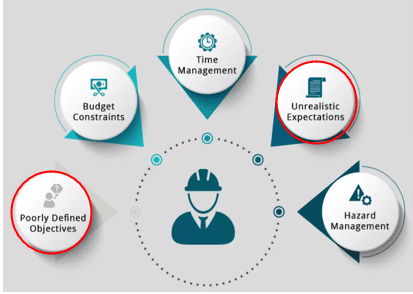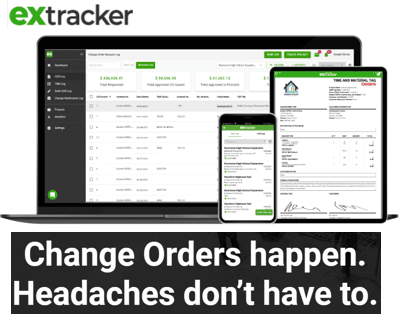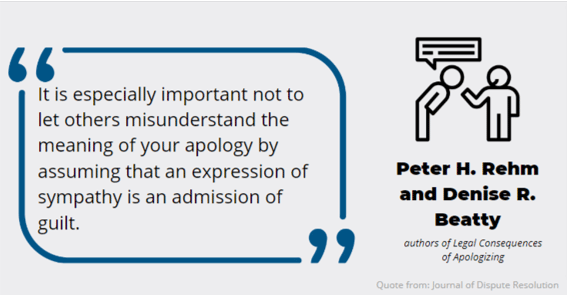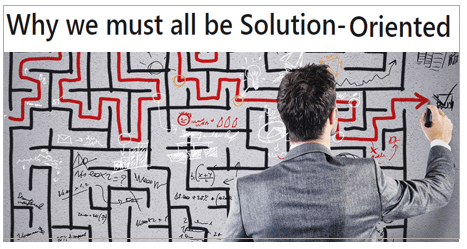Whether you’re a general contractor or project manager, you already know that the entire construction process is ripe with situations that can lead to disputes with even the most mild-mannered and well-intentioned clients.
Likewise, you know that every client is different, and many of them can be quite demanding, whether because that’s simply their personality, or because they are pressured by factors unknown to you, like their creditors, financial troubles, or personal issues.
Whatever their reasons, you are the one who has to manage demanding clients to prevent their behavior from negatively affecting your business operations, profits, and reputation.
So, here are seven tips for handling difficult construction clients.
In this article...
Agree on the Plan for the Project
Our first tip is focused on preventing clients from causing problems throughout the project by managing their initial expectations, agreeing on the project plan with them, and signing a contract before beginning any work.
In other words, it’s critical that your client clearly understands what is and isn’t included in the project (scope of work), agrees on a proposed plan (budget and schedule), and signs a construction contract to that end.
That way, everyone is on the same page from the start, and you have something to rely on if the client starts having unrealistic expectations.
Additionally, this prevents difficult clients from misinterpreting or taking advantage of a poorly defined project scope, thus helping you tackle at least two of the most common challenges faced by construction project managers, as shown below.

Naturally, aligning initial expectations and having a signed agreement can go a long way in addressing the other challenges, such as time and budget constraints.
Even when the client has agreed to the project plan and signed the contract, it’s still best to go over the plan with them once more just before the project starts (e.g., one week before).
This will jog their memory, allow them to express any concerns, and build their trust in you, which is often a major issue with different types of demanding clients.
Overall, ensuring that your client understands and agrees with the project plan (both when they sign the contract and immediately before the start of the project) is essential for managing their expectations throughout the project.
Set Firm Boundaries With Difficult Clients
Even when everything is agreed upon and clear, there are numerous instances where contractors find themselves having to set further firm boundaries to prevent difficult clients from taking advantage of them.
For example, if a prospective client asks for a small discount, you might be inclined to give it to them to close the deal.
However, that doesn’t mean you’ll be willing to make other concessions during the project, such as doing minor upgrades or other out-of-scope work for free or giving further discounts on specific budget items.
Thus, such boundaries should be clearly defined in the contract and communicated to the client.
Another aspect that contractors often neglect is protecting their time, i.e., informing the client when they’re available, as discussed in an article by Live Life Build.

In other words, they should be clear about, for example, not taking calls outside working hours or having the client visit the site at any time.
Remember, one of the calling signs of difficult clients is their inability to follow written and unwritten rules, so you need to stay polite but firm when setting boundaries and reminding the client about them.
So, to prevent demanding clients from taking advantage of your efforts to provide the best possible service, you should set and enforce clear boundaries from the beginning, both by specifying them in the contract and communicating them to the client (more than once, if necessary).
After all, many demanding clients will see your firm stance on the set boundaries as a sign of strength and self-confidence and will respect you more.
Document All Changes Throughout the Project
Considering the increasing complexity of construction projects and a growing number of user-friendly tech solutions for their management, ensuring that all project changes are tracked and documented is probably the best way to guard against difficult clients.
First, changes in construction projects are all but inevitable, whether they are caused by design errors, incorrect estimates, unexpected site conditions, or requested by the client.
Second, all project changes, whether initiated by the client or not, should be documented in a change order, which the client should sign.

When change orders are properly managed, you have everything in writing and can easily prove to forgetful or dissatisfied clients that they requested/approved the change order and the related costs.
Although tracking and documenting all changes in more complex projects can be challenging, today’s construction management software solutions make that process much easier.
For instance, Extracker is a cloud-based app that acts as a collaborative change order log where the general contractor, subcontractors, and the client can create, track, and review change order requests (CORs) and time and material (T&M) tags during the project in real time.

In other words, all change requests are instantly documented in the app and made visible to the client for their review and approval.
This saves time, reduces the risk of mistakes, and increases transparency between all stakeholders.
At the same time, it creates a digital trail of evidence that can prevent many misunderstandings and also protects your business from a range of issues usually raised by difficult clients, such as claiming they didn’t request or approve a specific project change or its costs.
Actually, one of the most useful features of most construction management tools is digital data collection, which facilitates all other project management tasks and can be used to gather evidence in the case of a dispute.
For instance, our cloud-based app GoCodes Asset Tracking enables contractors to track their equipment and tools so they can quickly resolve issues like misplacement, theft, or breakdown that could cause a project delay and provoke a problematic client.
Overall, documenting all changes throughout the project and making sure the client approves them in writing is the best guard against difficult clients, and modern software tools are the best way to do so.
Remain in Frequent Contact With Clients
Transparent, timely, and regular communication with your clients will reassure them that the project is going according to plan, give them more opportunities to voice their concerns, and allow you to address them on time.
Another aspect of maintaining frequent contact with your clients, providing regular project updates, and openly communicating any issues is that it builds their trust in you.
And that trust will prevent many clients from ever becoming difficult.
Here are the five best ways to build trust with your clients, and you can read more about them in an article by Canopy.

Furthermore, staying in frequent contact with the client to build trust is particularly important when you’re just starting your relationship, so neither you nor the client knows who they’re dealing with.
Of course, regular contacts and updates should continue throughout the project, as that gives clients more opportunities to communicate their concerns and enables contractors to address issues before they escalate.
Overall, frequent project updates and contacts with clients supported by timely and transparent communication will build trust, thus preventing or at least minimizing the issues raised by difficult clients.
Make Sure Your Clients Feel Heard
Sometimes just listening and making sure your clients feel heard can prevent or help resolve conflicts down the road.
For instance, if something upsets your client, sometimes they just need to air their frustrations, after which they’ll be more likely to accept an amicable solution.
The best way to address such situations is to listen to their concerns, empathize with them, and make them feel heard.
When doing so, keep in mind that emails, text messages, or even phone calls, although convenient, are less effective than direct face-to-face communication, particularly with demanding clients.

So, when a demanding client has a grievance, you should set the time for meeting them, showing you’re taking their concerns seriously.
In the meeting, listen carefully, ask questions, and take notes so you can, now or later, propose and agree on a solution that satisfies the interests of both sides.
Also, when looking for solutions, first summarize what they told you to ensure you clearly understand their issues, which will help avoid further miscommunication.
As said, this approach can make your client feel understood, thus preventing the situation from turning into a conflict and escalating further.
So, making sure your clients feel heard can make even the most difficult ones less demanding and more open to a peaceful solution.
Apologize to Your Clients Without Shifting Blame
When a conflict occurs, contractors should avoid arguing, blaming the client, or complaining about other circumstances beyond their control, even when they’re right.
Of course, if you or your employees made a mistake, it’s best to take accountability and apologize and offer a remedy, which should help calm the client and defuse the situation.
However, there are situations where the responsibility for a mistake is unclear and needs to be determined, or even some instances where a straightforward apology could be understood as legal grounds for further escalation.
As explained in an article published in the Journal of Dispute Resolution, people apologize for many reasons, and sometimes they do so to express sympathy and concern, although they have done nothing wrong.
Naturally, since the difference is not always clear, authors point out that:

In such situations, it’s best to apologize for the difficulties your client encountered and show your concern without directly taking the blame.
It’s also important to avoid blaming the client, other people, or circumstances beyond your control and focus on finding a solution instead, as explained in the next section.
In summary, offering a carefully worded apology to your clients, not arguing or shifting blame, will make even difficult clients more open to a peaceful resolution.
Focus On Finding a Solution
Focusing on finding a solution goes hand in hand with listening to your client and apologizing for their troubles and can be an effective method to appease demanding clients.
For starters, when a conflict occurs, concentrating on the problem and arguing with the client will only escalate the situation.
Instead, contractors should focus on finding a solution that both the contractor and the client will be satisfied with.
In other words, avoid giving excuses and shifting blame for the problem at hand, and instead focus on delivering the facts and finding the right solution.
You can read more about the reasons and benefits of being solution-oriented in a LinkedIn article shown here.

So, when a client informs you they have an issue they would like to discuss, consider the possible solutions before meeting them.
That way, you can discuss potential solutions with the client right away (naturally, after listening to them), but be prepared to modify your proposals according to their inputs.
However, even though you want the client to be satisfied, that doesn’t mean you can’t disagree with them in a calm and friendly manner so you can focus on jointly finding a solution that will, to the maximum extent possible, satisfy their interests, as well as your own.
Thus, focusing on finding a solution to the client’s problem is another way that can help you efficiently handle difficult clients, particularly when combined with other tips suggested here.
Conclusion
After touring these seven tips for handling difficult clients, it’s clear that the first four—agreeing on the project plan, setting firm boundaries, documenting all project changes, and staying in frequent contact with others—are aimed at preventing such clients from causing problems throughout the project.
On the other hand, the other three—making sure clients feel heard, apologizing without shifting blame, and focusing on finding a solution—are intended to facilitate a quick resolution of whatever issues clients may raise.
When combined, these tips can help you handle demanding clients, thus preventing their behavior from negatively affecting your business operations, profits, and reputation.





